
Art & Artisans – Multidimensional Jözef Sumichrast
by Kari Richardson
photography Paul Schlismann
“HAIR” photographed by Mel Schockner
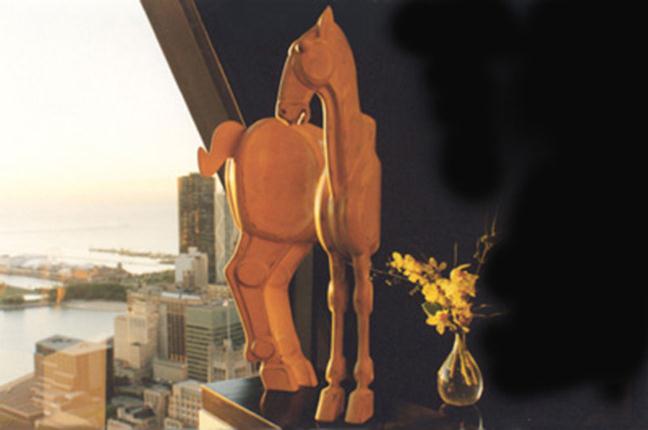
“Narrow Horse” is not at horse at all, Jözef says, but an artwork about the idea of working both two-dimensionally and three-dimensionally at the same time. When viewers ask why the artist’s horses might have only three legs or no eyes, he reminds them to think of the creation as a sculpture, not a horse.
- o -
Don't expect to find Lake Forest artist Jözef Sumichrast wandering through aisles of brightly colored paintbrushes and posterboard at the local art supply store. The Indiana-born sculptor instead looks to hardware stores for inspiration: Thick cardboard, carpenter's glue, drywall screws, and woodworking tools are the raw materials he uses to create.
Trips to the hardware store are supplemented with intense searches-both online and off-for new and hard-to-find tools. Jözef recently purchased one such set from an Eastern European machinist.
"I don't go into art supply stores at all," says Jözef, who sells his work throughout the United States, Europe and South America. "I can't find any inspiration at all from that format. I'm always talking to different manufacturers about their products and they are usually quite surprised at the way I'm using them."
If the self-taught sculptor's tools of the trade seem unconventional, it's just a precursor to his creative process. Jözef's bronze and urethane sculptures take shape from cardboard. After transferring his drawings to an industrial-strength version of the material, the artist uses shellac and drywall screws to bend and twist, woodworking tools to scrape and chisel. The result: multidimensional artwork created from hardware store materials.
"I usually start with the torso or main trunk," Jözef explains. "To build up thickness, I laminate the various pieces. All of them are made to come apart like a giant puzzle."
One week each month Jözef travels to a town in Colorado, where his cardboard sculptures take their final shape in bronze-or more recently, in clear urethane-using a process called lost wax casting. There Jözef works closely with a group of skilled artisans to make and refine quarter-inch-thick bronze molds of his original work using an intricate process.
"What I'm doing is not the typical way to work," he says, "so I have to explain what I want everything to look like."
The difficulty of this creative process isn't lost on Jim Whitely, an engineer by profession. Along with wife Adrienne Johns, Jim has purchased three of Jözef's pieces. The couple displays two of the artworks-one a horse and the other a swimmer-in the garden and poolside at their Lake Forest home.
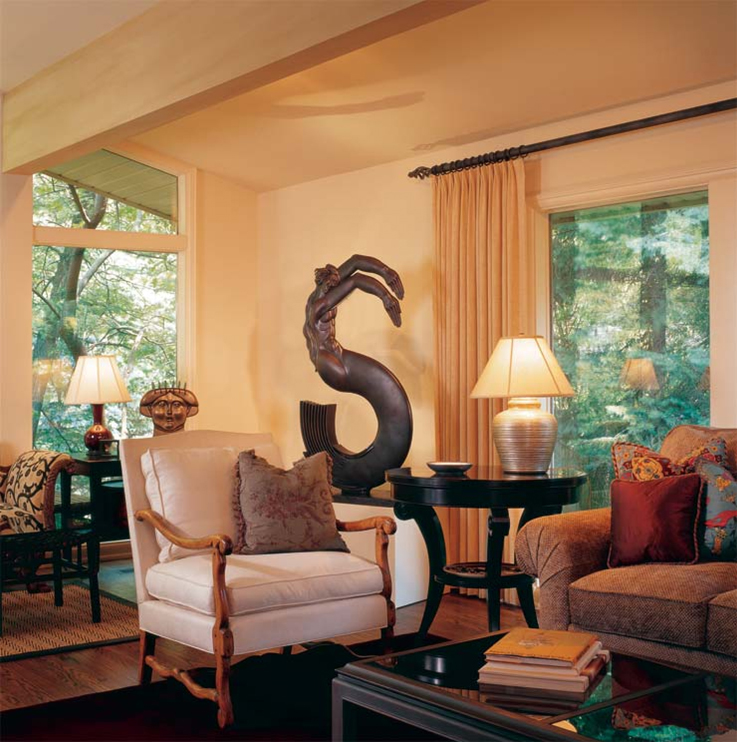
Jözef was struck with the idea for “S Mermaid” after watching his daughter, Kristin, in the pool. “Swimming is a way of not touching the earth”, he says. “When I was watching her swim that was amazing to me.” "Jözef needs to say something and his medium is sculpture," Jim says. "It's a very difficult medium in which to communicate. It's a lot easier putting something down on paper than it is bringing it to life in three dimensions."
- o -
Jözef's unusual sculpting process (he believes he is the only artist in the world to sculpt this way) has evolved gradually over the past two decades. The son of Czechoslovakian immigrants, Jözef grew up in a small town in Indiana where he says, "there really wasn't any art." After completing his studies at the American Academy of Art, he started his career in a two-dimensional medium-by painting. Not too long after, a customer gave him free rein to create anything he wanted. The result: his first sculpture. He was hooked by the power of working in three dimensions and has seldom returned to painting and drawing except to sketch ideas.
The artist began working in clay, much like other sculptors, but says he quickly grew tired of that material. "The work I was creating looked a lot like other work I had seen," he says. "I wanted to take it in another direction. Using a flat surface that I could distort (cardboard) gave me the beginning of that.
"When I'm working, I'm really working both two- and three-dimensionally at a time. I visualize things in two dimensions, but I bend and curve them into a three-dimensional form. It's got less to do with that particular figure than with the process of trying to realize form. It's much the way an architect would visualize a house."
Horses appear frequently in Jözef's work, but not because of any particular affinity for the animal, he says. Rather, equine and human bodies are two of the forms he finds most interesting to model.
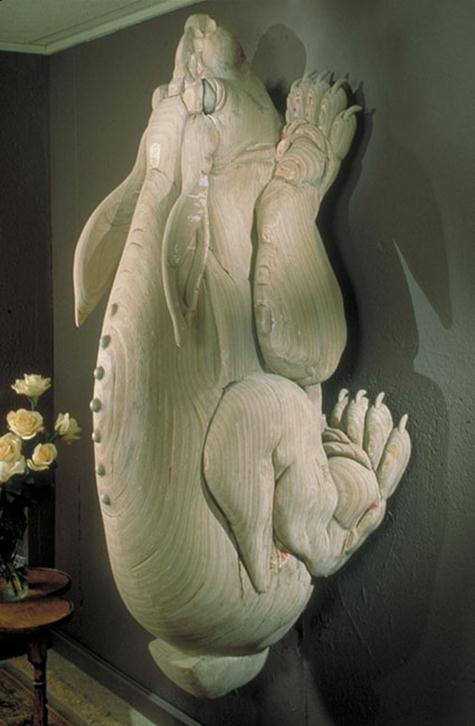
After one particularly busy-and sleepless-period, Jözef created the vertical piece "Wall Rabbit" of cardboard to mimic an apparition he saw while working late at night. "Cardboard is such a lowly material to work in," the sculptor notes, "but when it's sanded enough it takes on the appearance of velvet.
- o -
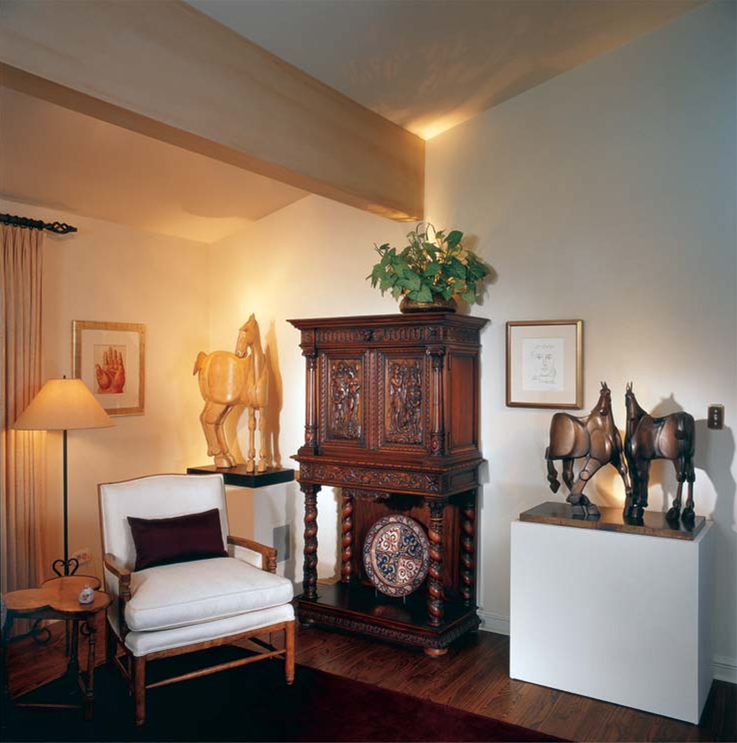
Jözef finished his pieces "Narrow Horse" and "Narrow Horses" with ochre- and liver-colored patinas respectively. The coatings will age with the sculptures and may even wear off in places they are touched frequently-something he encourages viewers to do. "A painting you can look at, but you better not touch it," he says. "A bronze sculpture is indestructible."
- o -
For Deerfield and Arizona-based photographer Paul Schlismann, Jözef's work is a reminder that reality goes beyond what people see on the surface. "What's always fascinated me about Jözef's work is that it shows his thinking process," Paul says. "He's not trying to replicate reality. He goes far beyond the literal and takes on different dimensions. Instead of looking at something, he looks into it."
Jözef speaks often of a "fourth dimension," a concept he illustrates with a sculpture of a swimming horse called "S Horse." "When I was in Mexico, I rode this horse in the ocean," he says. "The animal actually swam like a dog. That experience made me think about a new way to work on a horse. I took that idea and pushed it into the second and third and fourth dimensions. The fourth dimension would be the experience of being on that horse."
Jözef speaks often of a "fourth dimension," a concept he illustrates with a sculpture of a swimming horse called "S Horse." "When I was in Mexico, I rode this horse in the ocean," he says. "The animal actually swam like a dog. That experience made me think about a new way to work on a horse. I took that idea and pushed it into the second and third and fourth dimensions. The fourth dimension would be the experience of being on that horse."
For Ed Pasquesi, the fourth dimension comes alive in Jözef's "Two-faced Angel," a piece he displays in the living room of his home. Ed says the piece takes him back to his Catholic school days, when he spent much time attending church and praying. "(The piece) has a humility. It's a reconnection with the spiritual world. I almost hear chanting when I look at it," he maintains.
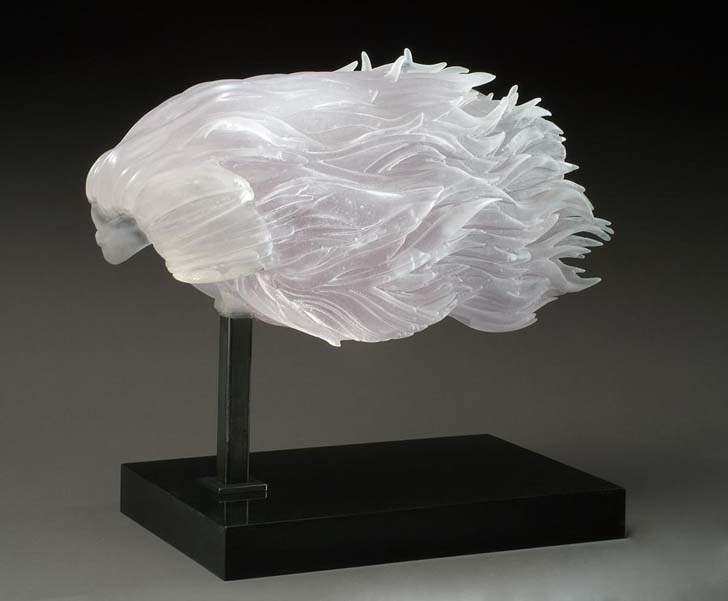
Jözef's art has earned him fans such as Susan Aurinko, whose FLATFILE galleries has exclusive representation of his work in Chicago. Susan herself has purchased a piece called "Hair," a sculpture which is the wavy mane to top another of Jözef's sculptures, “Space Geometry”. After viewing the piece by itself, Susan, who collects Lalique and favors transparent art bought the sculpture.
"I had seen his figures and thought they were so surreal," Susan says. "I like the form (of "Hair"), but for me, it couldn't have been bronze. I'm all about light." Now at home in her library, Susan is pleased by the way "Hair" catches the afternoon sun. Though Jözef, too, is pleased with his most recent castings in urethane, for him they don't match the appeal of bronze, which he says gives an air of timelessness to his work, inviting the viewer to return.
"It's like meeting a person for the first time," he says. "It takes a while to unwrap all of the layers. A bad piece of art is something that you look at and have figured it out the first time. If it's a good piece of art you want to come back and visit again."